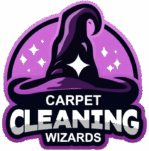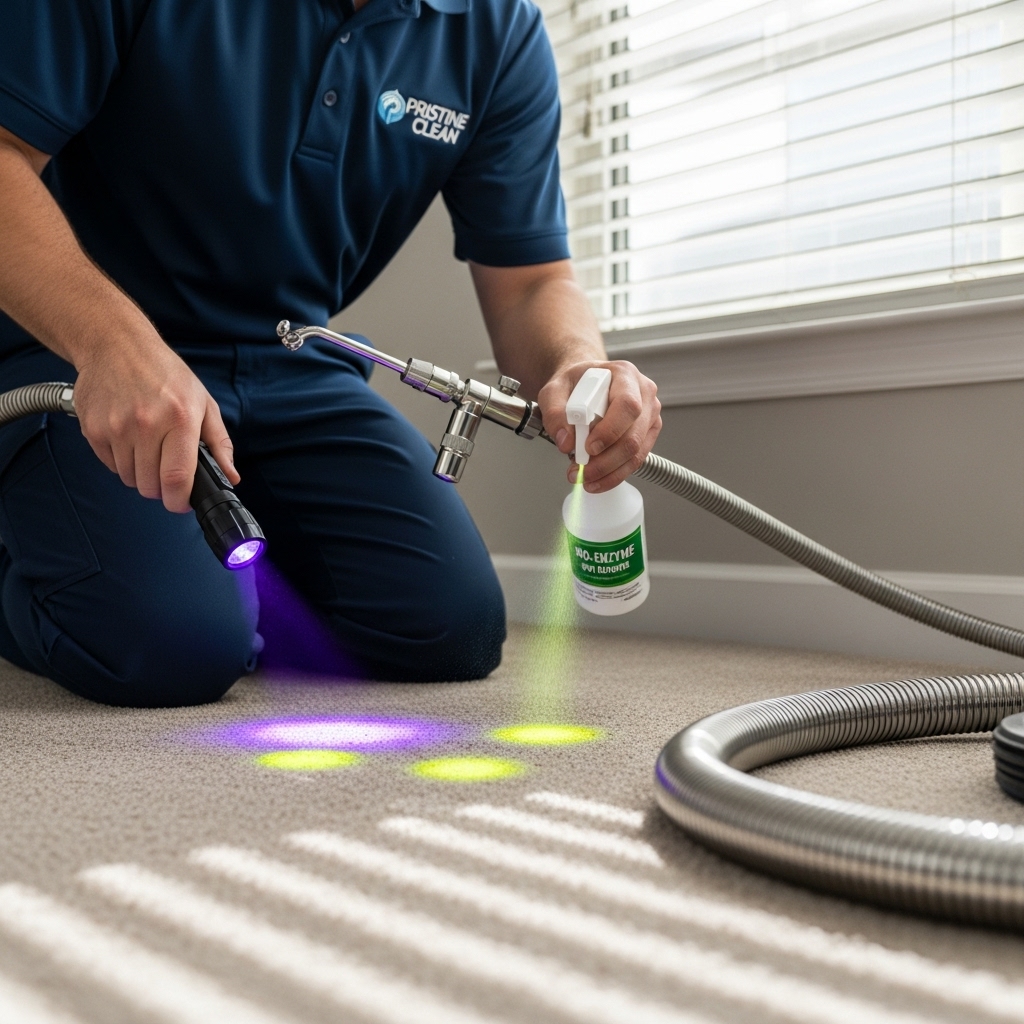Win the Battle Against Pet Stains and Odors in Elizabeth Homes
Pets bring joy, companionship, and a sense of family, but they also bring occasional accidents that leave stains and persistent odors. In Elizabeth, New Jersey—where seasonal humidity and busy lives can magnify those issues—specialized pet stain and odor carpet cleaning is essential for a healthier, fresher home. Whether you are dealing with a new puppy, an aging pet, or a rescue still learning the rules, the right approach neutralizes odors at their source and prevents repeat marking. Experienced local carpet cleaning services combine chemistry, technique, and quick response to restore carpets without harsh smells or damage.
Understanding the science of pet accidents helps you make smart decisions. Urine starts out acidic and becomes alkaline as it dries, leaving behind crystals and salts that can reactivate when humidity rises. That is why an old spot may suddenly smell stronger in summer or after a DIY cleaning attempt. Odor molecules can lodge in carpet fibers, backing, and even the pad and subfloor. Treating only the surface rarely solves the problem. Successful odor control depends on proper detection, the correct neutralizing agents, and thorough extraction.
How Professionals Identify and Treat Pet Contamination
A thorough inspection starts with your history of incidents and any visible staining. Technicians may use UV light to locate urine residues that are invisible by day. Moisture meters can help assess whether the contamination penetrated to the pad. Once the affected areas are mapped, the technician chooses a treatment path: topical enzyme or oxidizing agents for light contamination, sub-surface injection and extraction for moderate issues, or more advanced solutions for severe cases where the pad or subfloor is involved.
Enzymatic cleaners break down the organic compounds in urine, reducing odor at the molecular level. Oxidizers, used correctly, neutralize odor-causing compounds without overwhelming perfumes. The key is allowing appropriate dwell time—rushing this step reduces effectiveness. After chemistry does its work, controlled extraction removes residues. For deeper issues, specialized tools inject solution into the pad and extract from below, limiting wicking and preventing recurring odor.
Why DIY Often Falls Short
Household spray-and-blot attempts can help with fresh accidents but often leave residues that attract soil or push contamination deeper into the backing. Overwetting with a rental machine can wick stains up from the pad, making the spot look worse the next day. Products with high pH or optical brighteners may set stains or bleach fibers. Professionals manage moisture, choose chemistries that are safe for your fiber type, and ensure thorough extraction so odors do not rebound after a warm day or a spike in humidity.
Matching Treatment to Carpet Fiber and Pile
Synthetic carpets like nylon and polyester tolerate a wide range of pet treatments when managed correctly. Olefin loop piles resist water-based stains but can hold oils; they benefit from careful agitation and rinsing. Wool requires a gentler, controlled pH and temperature approach with specialized products to avoid felting or dye shift. Frieze and plush styles need grooming after treatment to restore a uniform look. A skilled technician will identify the fiber and tailor the plan accordingly.
Dealing with Repeat Marking and Behavior
Odor control ties directly to pet behavior. If residual scent remains, pets may remark the same spot. Complete neutralization and thorough extraction are your best allies. After cleaning, restrict access until fully dry and use positive reinforcement to guide pet habits. Enzymatic spotters designed for home use can help if new accidents occur; choose one recommended by your technician for compatibility with prior treatments.
Odor Sources Beyond Urine
Pet-related smells are not only about accidents. Wet dog odor, dander, and tracked-in soil contribute to a stale environment over time. Regular vacuuming with a HEPA-filtered machine reduces dander. Washing pet bedding frequently and grooming outdoors or near ventilation helps. Scheduled professional cleanings reset the environment, removing accumulated oils and allergens from the pile and backing.
The Professional Workflow for Pet Issues
- Interview and inspection with UV light and, if needed, moisture detection.
- Pre-vacuum to remove dry soils and hair that interfere with chemistry.
- Targeted pre-treatment on identified spots with enzymes or oxidizers.
- Dwell time to allow chemistry to work at the molecular level.
- Agitation and sub-surface extraction for deeper contamination.
- Overall cleaning via hot water extraction or a low-moisture method, depending on fiber and humidity.
- Rinse balancing to normalize pH and reduce resoiling.
- Air movement and ventilation recommendations for fast, complete drying.
Each step supports the next. Skipping detection or rushing dwell time undermines the result. Detailed documentation of treated areas also helps you monitor for any recurrence.
Understanding Wicking and Reappearing Spots
After a deep treatment, some spots may appear to resurface as the carpet dries. This is often wicking—moisture moving up through the pile, carrying dissolved residues. Speed drying with air movers and using absorbent towels weighed down gently over the spot can capture upward movement. If any discoloration remains after fully drying, a quick follow-up treatment usually resolves it.
Health and Comfort Considerations
Beyond aesthetics, managing pet accidents improves indoor air quality and comfort. Urine byproducts can irritate sensitive noses and contribute to a stale environment. Thorough extraction and pH-balanced rinsing reduce irritants. Households with infants, seniors, or allergy sufferers especially benefit from consistent maintenance and quick response to incidents.
What You Can Do Immediately After an Accident
- Blot—do not scrub—with clean, white cloths to absorb as much as possible.
- Apply a recommended enzymatic spotter sparingly and allow dwell time.
- Avoid steam or hot water on fresh urine; heat can set odors.
- Mark the area so you can show your technician during the service visit.
Addressing the issue quickly reduces the chance of permanent discoloration and deep penetration into the pad.
Elizabeth-Specific Considerations
Seasonal humidity in Elizabeth can amplify odors, especially in lower levels or homes near water. Basements with limited airflow may need extra dehumidification during summer. Entryways see a mix of outdoor soils and pet paw prints, making protective mats essential. Apartments with shared hallways can develop filtration soiling under doors; this combines with pet odors to create persistent dark lines and stale smells that require targeted treatment.
Integrating Pet Treatments with Routine Cleaning
The most effective strategy combines incident response with scheduled professional maintenance. Many pet owners choose quarterly cleanings, focusing on high-use zones like family rooms, bedrooms, and stairs, with a deeper restorative cleaning once or twice a year. Keeping a simple log of accidents helps your technician target recurring areas for sub-surface attention. Grooming after each service keeps the pile uniform and makes future spotting easier to see early.
Myths About Pet Odor Removal
- Myth: Strong perfumes fix odors. Fact: Covering scent does not neutralize odor-causing compounds.
- Myth: More product works better. Fact: Over-application can leave sticky residues and slow drying.
- Myth: All stains are permanent. Fact: Many discolorations lighten significantly with proper chemistry and time.
- Myth: DIY machines can solve deep odor. Fact: Without sub-surface extraction, odors often return.
Working with Pros for Lasting Results
Look for providers who explain detection methods, chemistry choices, and why they recommend specific steps. They should clarify drying expectations and offer a simple aftercare plan: ventilation tips, foot-traffic guidance, and advice for future accidents. Teams who document treated areas can follow up effectively if you notice any remaining odor after full drying.
Midway through your decision-making, remember that the goal is complete neutralization, not temporary masking. That is where strategic professional carpet cleaning makes the difference—combining the right products, proper dwell, and measured extraction to stop odors at their source.
Frequently Asked Questions
Can all pet urine stains be removed? Many can be lightened or removed significantly, but results depend on fiber type, dye stability, and how long the contamination has been present. Early treatment yields the best outcomes.
Will the odor come back? If contamination in the pad or backing is not addressed, odors can return, especially in humid weather. Sub-surface extraction and proper neutralization reduce the chance of recurrence.
Are the treatments safe for my pets and family? Yes, when performed with professional products and techniques that control pH, dilution, and dwell time. Your technician will recommend ventilation and re-entry timing.
How quickly should I call after an accident? As soon as possible. Fresh incidents are easier to address, and prompt blotting followed by professional evaluation can prevent permanent discoloration.
What about older spots I did not notice? UV inspection often reveals hidden residues. Technicians can treat those areas during the service to prevent surprise odor spikes later.
Can you treat area rugs and stairs? Yes, though rugs require fiber identification and, in some cases, off-site washing. Stairs benefit from targeted odor treatment and careful grooming to restore uniform appearance.
How do I prevent repeat marking? Complete neutralization, restricted access until dry, positive reinforcement, and consistent routines help. Consider enzymatic spotters approved by your technician for any new incidents.
Restore Comfort and Confidence in Your Home
Your pets are part of the family, and a fresh, odor-free home lets you enjoy them without compromise. Partner with a team that understands detection, chemistry, and careful extraction, and keep a simple plan for future incidents. When you are ready to reclaim your living room, bedrooms, and stairs with targeted solutions that last, rely on trusted carpet cleaning services to eliminate odors at the source and bring back a clean, welcoming space.

